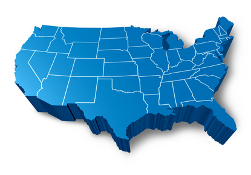 Almost every state requires motorists to be insured before driving, but each state has a unique range of prices for vehicle coverage. Insurance costs are dependent on many different things, like population density, crime rate, uninsured motorist percentage, required coverages, and many other facts that are unique for every location. As a result, there are some areas in the U.S. that are more affordable than others.
Almost every state requires motorists to be insured before driving, but each state has a unique range of prices for vehicle coverage. Insurance costs are dependent on many different things, like population density, crime rate, uninsured motorist percentage, required coverages, and many other facts that are unique for every location. As a result, there are some areas in the U.S. that are more affordable than others.
The average cost of vehicle coverage is likely to change every year, but several states have consistently remained among the cheapest. Data produced by the National Association of Insurance Commissioners and made available by the Insurance Information Institute show that in 2009 the typical expenditure in North Dakota was $510, which was the lowest in the country. Trailing closely behind were South Dakota and Iowa with average expenditures of $521 and $532, respectively. In comparison with a national average of $785, insurers in these states offer considerably cheaper rates.
The areas that boast some of the highest expenditures include Washington, D.C., with an average of $1,128, New Jersey at $1,101, and Louisiana at $1,099.
When comparing these two groups, there is a distinct difference in driver density. For example, North Dakota is home to over 245,000 licensed drivers occupying over 86,000 miles of public roads. In D.C., however, there are over 189,000 licensed drivers using only 1,400 miles of public roads. That means there are only 2.84 drivers per mile of public road in North Dakota, but 13.5 drivers per mile in D.C. Consequently, the accident potential in D.C. is significantly higher than in the Peace Garden State.
While the area where a person lives will have an effect on rates, policy prices are also based on individual drivers. A person who lives in a state with some of the lowest coverage costs may not necessarily be able to locate inexpensive auto insurance more easily than someone living in D.C. if they have a bad driving history, have a long daily commute, are young, or have established a poor credit history; all those factors play important parts in policy pricing.
In addition to the driver’s personal details, the details of state insurance laws also contribute to pricing differences. Comparing expenditures between states is not what’s known as an “apples-to-apples” comparison, since the minimum amount of coverage required by law varies from state to state. In Alaska, for example, drivers are required to carry a total of $125,000 in liability coverage. The total liability coverage required of drivers in Ohio, on the other hand, is $32,500. That can make a big difference in coverage costs, which should drive home the necessity for consumers to consider their coverage levels and compare costs only for the same amounts of protection.
Some states, though, are exceptions that manage to maintain low average costs while having high minimums. Both Iowa and Maine are near the top the list of inexpensive states to find auto insurance, but each of these locations requires motorists to maintain different levels of protection. In Iowa, drivers only need to maintain a total of $55,000 in liability coverage to legally drive. In Maine, however, these limits are the same as Alaska’s, $125,000. Although Iowa boasts a slightly lower average expenditure, the average motorist in Maine may be significantly more prepared for an accident for only a few extra premium dollars.
Source: http://www.onlineautoinsurance.com/affordable/